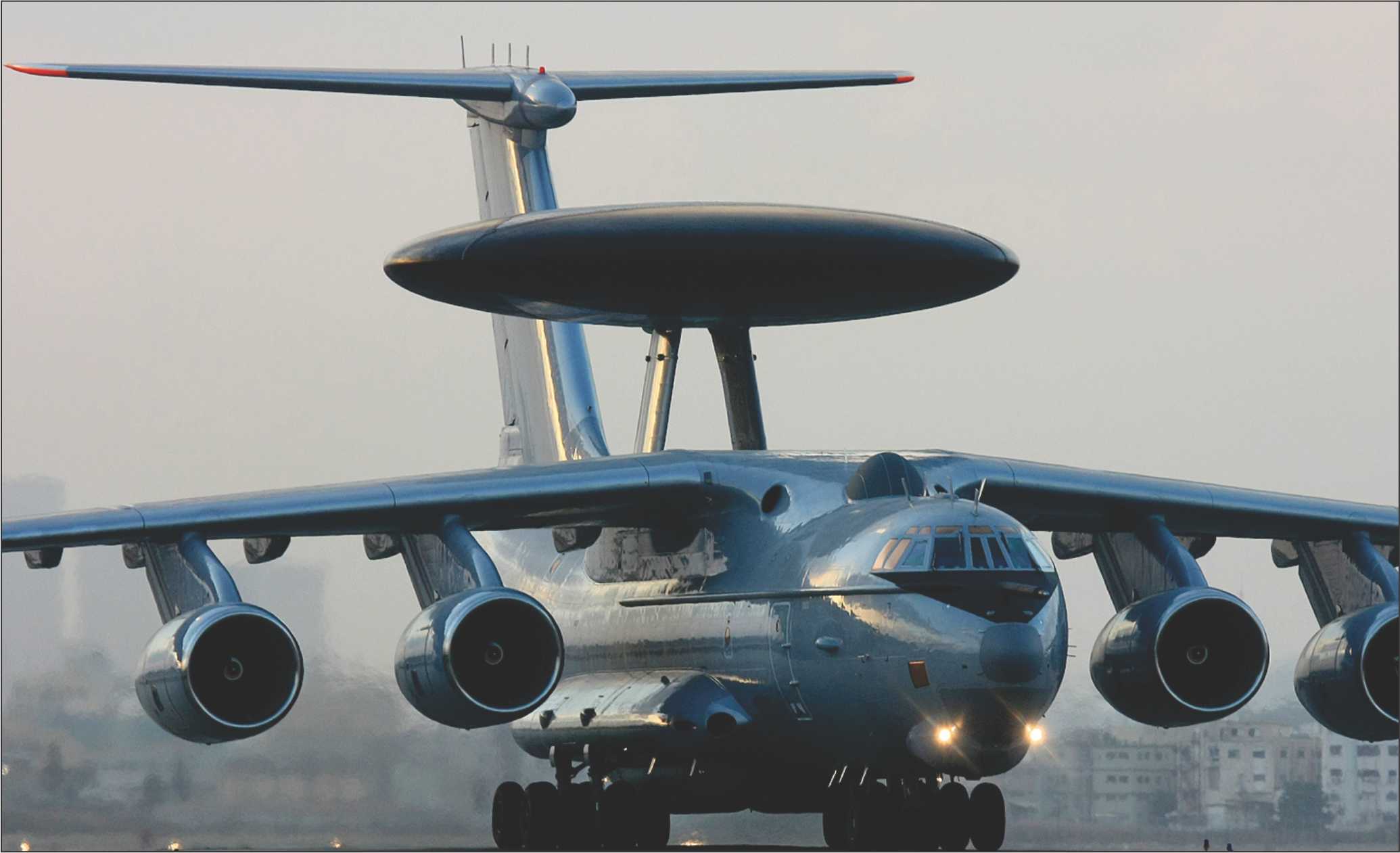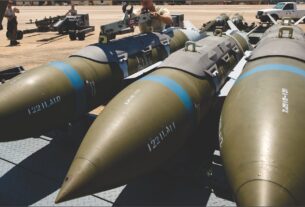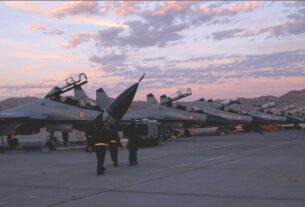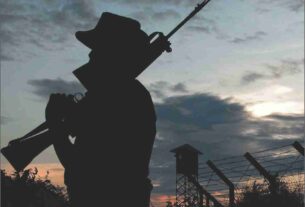|
Going by the speed of the induction one would never believe that Airborne Early Warning and Command Systems (AEW&CS) aircraft are a vital part of India’s air defence network. Because India was not getting them fast enough and in sufficient numbers it had to take resort to importing static aerostats that would plug the gaps in radar coverage of the Indian sub-continental periphery.
India’s AWACS and aerostat projects have been through many byways before getting stuck in the shoals of indigenization. The first lot of three were hybrid-an Uzbek aircraft (IL-76) was retrofitted with Israeli sensors and a static radome (the bulbous contraption on its back giving AWACS aircraft a very distinctive look). The conversion was done by Israel. The second lot (also of three) based on the Brazilian Embraer transport aircraft is fitted with an India-made panel sensor (two long conjoined strips carried on the back) which, because of its linear configuration suffers the disability of only a 260 degree coverage by its active electronically scanned array. In a still more different experiment the Indian Air Force bought two static helium balloons known as aerostats to carry cameras and radar aloft to look into Pakistan and maintain a posture of alert and preparedness. One was damaged more than a year ago and has still not been repaired. Work is also underway at the Aerial Delivery Research and Development Establishment, Agra, of the Defence Research and Development Organisation where two prototypes of aerostats have been developed. One is the Akashdeep which is capable of carrying a payload of a 300 kg to an altitude of 1,000 meters. It can survey areas up to 20 km away and with advanced cameras and radar, its surveillance range is variously reported as 60 km or 100 km. The aerostat can be used for surveillance, intelligence gathering, communication relay and jamming of electronic systems. The second, the Nakshatra that can reach a height of 4500-5,000 meters and survey up to a range of between 200–250 km or 450 km with a payload 800 kg to 1 tonne of cameras, infrared equipment for night-time surveillance and radars. They demonstrate an emerging capability to make aerostats inhouse but there is much more to be done to create indigenous sensors capable of giving crystal-clear images at all times in day and night. There is also a felt need to properly train the crew to ensure that the type of accident that destroyed the Israeli aerostat is not allowed to happen again. An aerostat has the advantage of being set up in any type of terrain but it needs to be monitored to ensure that sudden strong gusts of winds and squalls do not knock it askew. The Ministry of Defence has sought to create a mix of these platforms. The original plan was to have 15 aerial surveillance and command aircraft on two different platforms allowing for varying ranges and endurance over a decade from 2004 to 2014. To date only three-the Phalcon radar on the Il-76 integrated by the Israelis-are in service. This gives a horrifying picture of the state of the much vaunted network centric warfare system that was to be set up to cover the whole country and enable all the three Services to operate in close coordination with each other. The AWACS, the airborne early warning and command (AEW&C) on the Brazilian Embraer aircraft, and the aerostats along with satellites in geostationary orbits were to be parts of a communications grid where surveillance results and reconnaissance details were conjoined with each other to provide a holistic picture of battlefields to military leaders down the echelons of command. The government has changed tracks, of sorts. It has decided to execute the integration of the systems by itself and the DRDO has suggested that India go in for a large body aircraft with commitments for making the structural changes required to fit the ten meter wide rotodome to house the radar and the AESA components. Exploring options The DRDO has its eyes on the Boeing 767 and the Airbus 330 with the intention of utilizing the maintenance facilities available in India with companies flying these aircraft on their commercial routes. This line of thinking is, however, fraught with the possibility that because Boeing has done work on converting its aircraft to the AWACS role and Airbus does not it could lead to the very same ‘single vendor situation’ that has been the bane of so many military contracts in this country. India ought to have learned from experience that the best laid plans of mice and men can go awry for any of a million reasons. In the creation of the Phalcon AWACS India had hoped that with all its experience in building the Il-76 airframe the Uzbekistan Tashkent Aircraft Production Organisaton completed the first several months late and by the time all three were delivered the project was behind schedule by nearly 31/2 years. This came from a firm that had been making Il-76 aircraft for the Soviet fleet since its conception. On several occasions India has tried its very best to break out of the bear hug of the Russians but it still remains about 60 percent dependent on Russian arms to maintain a viable conventional deterrent against Pakistan. Several times, as in the case of the Brahmos cruise missile and, hopefully the fifth generation fighter aircraft, the Russians are able to deliver a very superb weapon. Sucking up to the Americans as is obvious in the manner of choosing of the basic AWACS airframe (the American contender) does not ensure that the Americans will stick to the timelines and the contractual obligations. Within the AWACS aircraft there are many kinds of sensors, many of which the Americans would want to protect and keep away from India. The example from Britain is a case in point. When the last version of the Harrier jumpjet was to be retired, India made an offer to buy it along with its weapons fit. The Brits refused to sell it with the Blue Vixen radar because it had some special qualities that it did not want to part with. The manner in which the Indian armed forces prepare their qualitative staff requirements (QSR) is a long drawn out process because most of those who are entrusted to create the QSR are unaware of the new developments and technological improvements that have been incorporated even in the earlier versions of weaponry. This leads to a piquant situation of negotiating on a QSR and progressively adding new items to it as knowledge improves during negotiations. The DRDO wants to make the AWACS at home. It is a laudable ambition but does it have the technology for the sensors that will go into that airframe? |
|





